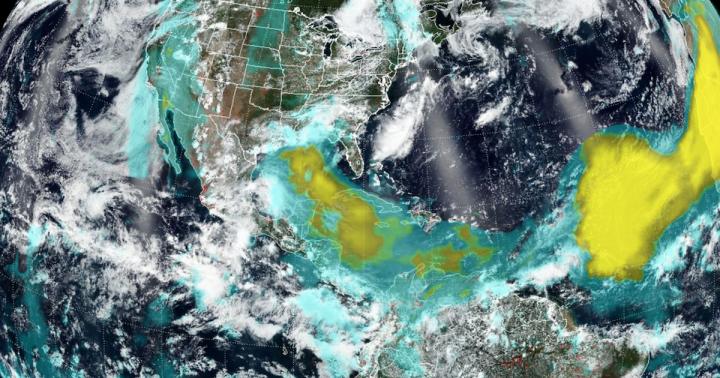Now, researchers from the University of Kansas have published a new study in the Bulletin of the American Meteorological Society parsing the mechanism that transported the dust. Their results explain a phenomenon that could occur more frequently in the years ahead due to climate change, affecting human health and transportation systems. African dust darkened the skies of the Caribbean and American Gulf States thanks to a trio of atmospheric patterns, according to the study.
“Our study finds that it was mainly three different systems,” said lead author Bing Pu, assistant professor of geography & atmospheric sciences at KU. “The African easterly jet exports the dust from Africa towards the Atlantic region. Then the North Atlantic Subtropical High, which is a high-pressure system sitting over the subtropical North Atlantic, can further transport it towards the Caribbean region. Once the dust reaches the Caribbean region, the Caribbean low-level jet — that’s another system — along with the subtropical high can further transport the dust from Caribbean region towards the States.”
Pu and co-author Qinjian Jin, lecturer and academic program associate with KU’s Department of Geography & Atmospheric Science, used satellite datasets to reconstruct the patterns that transported the dust from Africa to the Americas.
“We mainly used Moderate Resolution Imaging Spectroradiometer on Terra and Aqua satellites, the Visible Infrared Imaging Radiometer Suite onboard the Suomi National Polar-orbiting Partnership satellite, and Cloud-Aerosol Lidar with Orthogonal Polarization onboard the Cloud-Aerosol Lidar and Infrared Pathfinder Satellite Observation satellite,” Pu said.
Combining the satellite data with readings from air quality stations, the researchers used computers to analyze how the dust was handed off between jet-stream systems to reach the Caribbean and U.S., where it disrupted transportation and had the potential to change weather.
“News reports mentioned the visibility of the airport in San Juan, Puerto Rico, was reduced down to five miles, which is really low,” Pu said. “Visibility in the U.S. Virgin Islands was down to three miles, so it can affect public transport. There are environmental impacts as well. Dust can affect circulation and precipitation — they can modify climate as well, when there’s a large amount.”
Worse, the dust plume from Africa had the potential to cause health problems for people in the Americas.
“Small particles, especially those with diameter less than 2.5 micrometers, can easily be taken into the human breathing system and cause respiratory diseases,” Pu said. “Some studies have linked this back to lung cancer as well. There’s also a study finding that the dust storm has been associated with increased nonaccidental and cardiovascular mortality in the United States. Also, there are dust-dwelling fungi which may cause a disease called Valley fever that happens in Arizona and California and has been related to dust storms in those regions.”
Pu said hotter, drier weather and reduced vegetation in Africa could produce more airborne dust. Yet, these emissions are hard to forecast.
“There are some observations showing there is reduced precipitation in West Africa over the 20th century, which indicate drying there would have more dust emissions,” she said. “But model results don’t give a conclusion about whether dust will increase or decrease in the future. Some papers find that there would be decreased dust emissions. Our previous study found that there might be an increase in southern Sahara region in the summertime.”
Further, according to Pu, the cooperation of jet systems needed to transport the dust across the ocean is even less predictable.
“Even if you have enhanced or decreased emission, if there aren’t favorable conditions for dust to be transported, then its impact on this downwind region will be harder to quantify,” she said. “In addition to understanding the emission process in the dust-source regions, we also need to look at circulation variations that help us better project this long-range transport of dust as well as its environmental and climate impacts in the U.S. Other regions can be affected as well because African dust can be transported to South America and also Europe and the Mediterranean region.”
###




